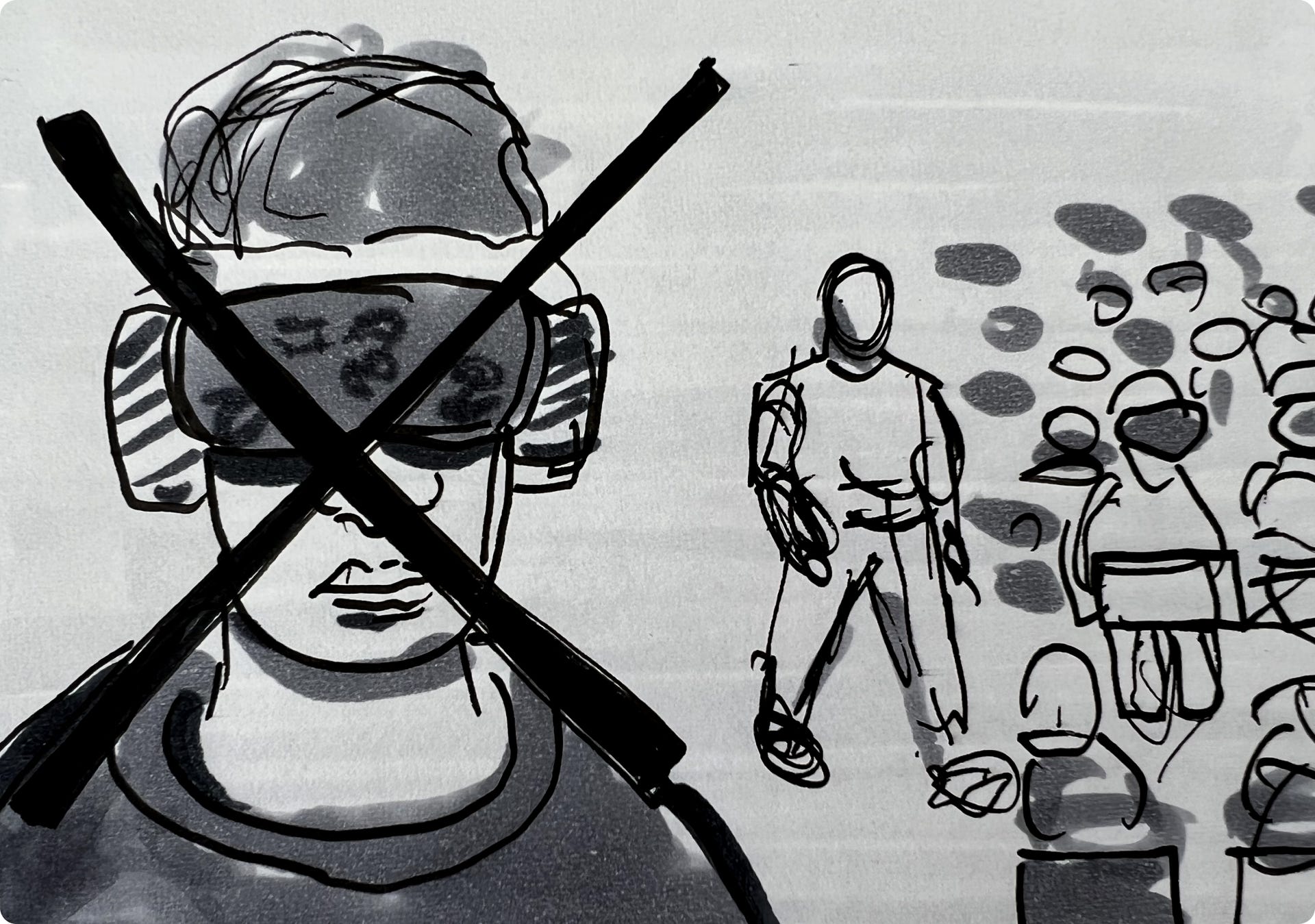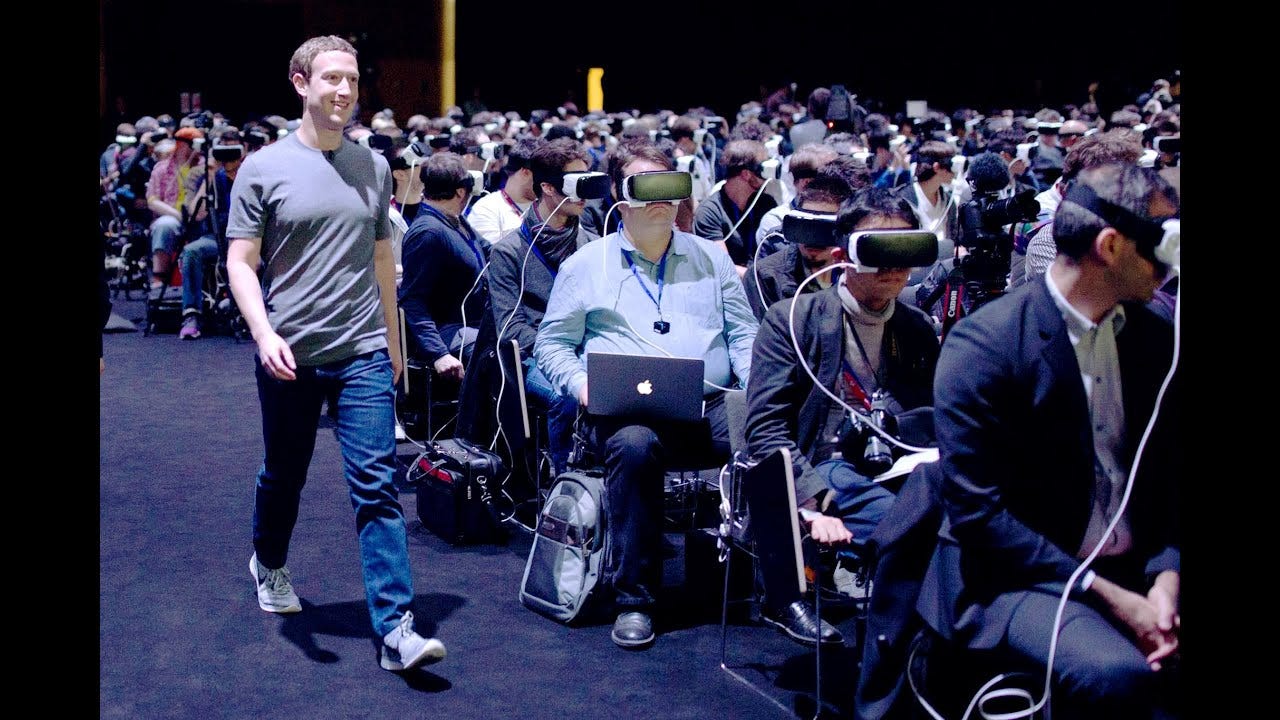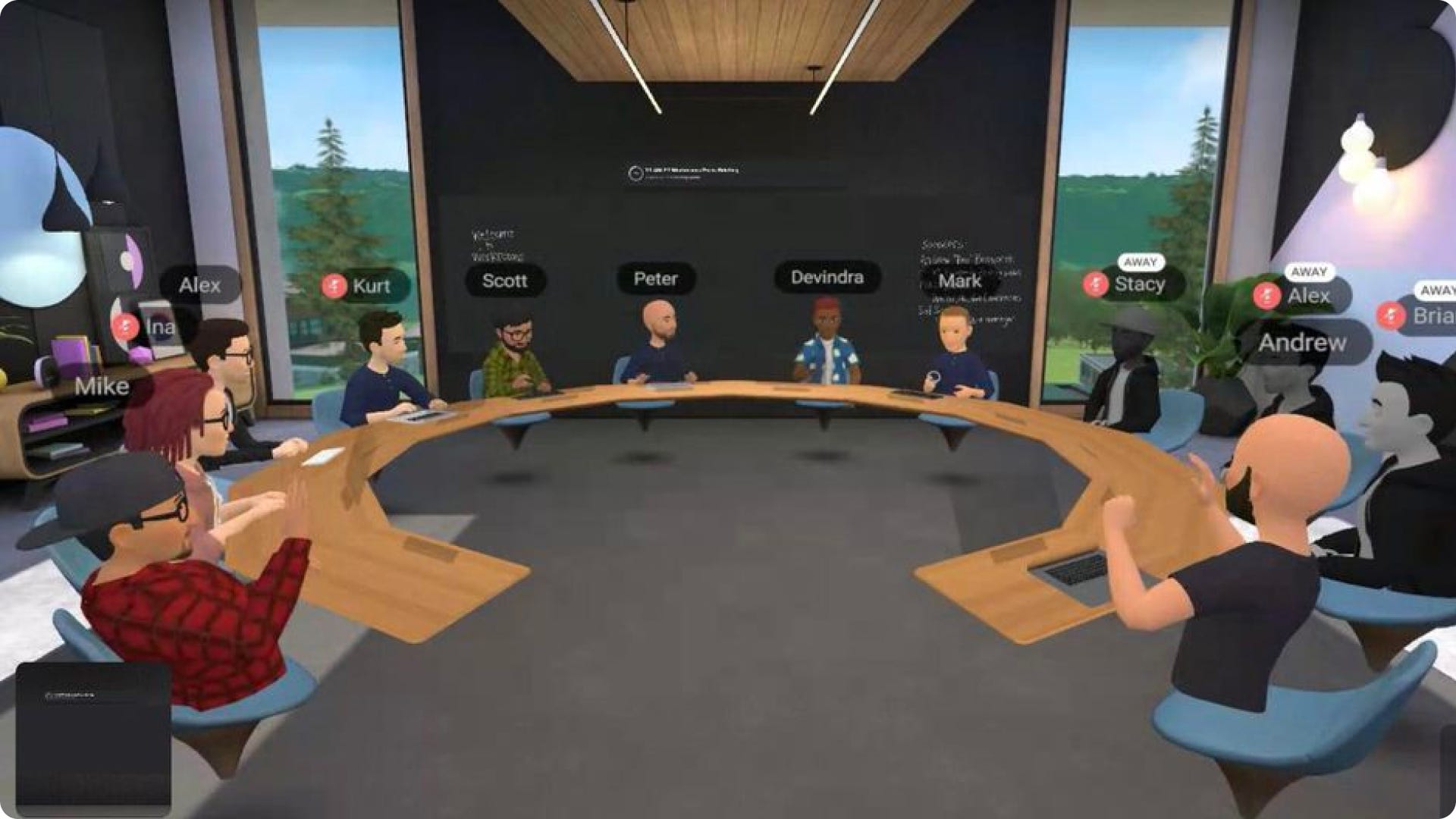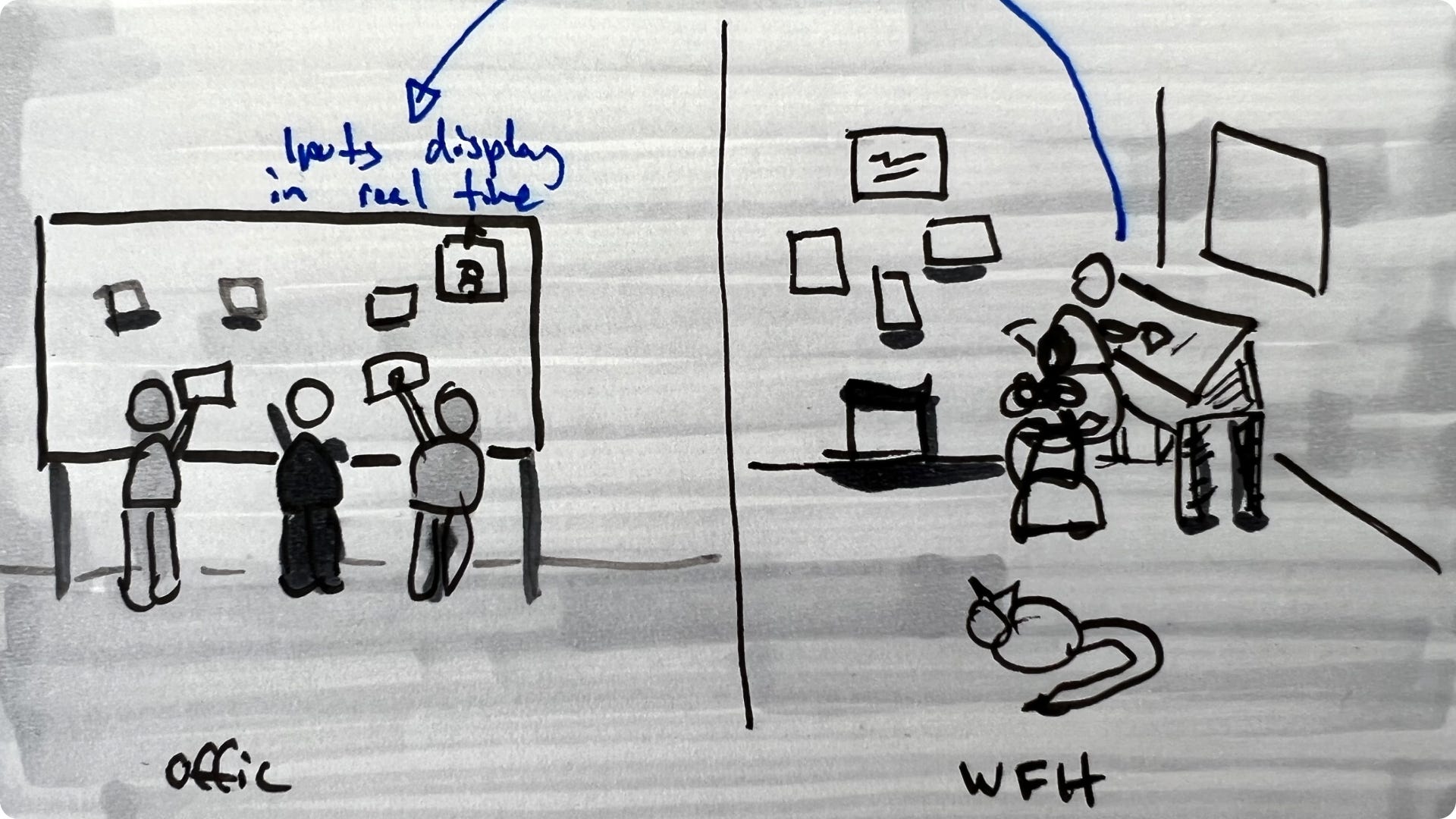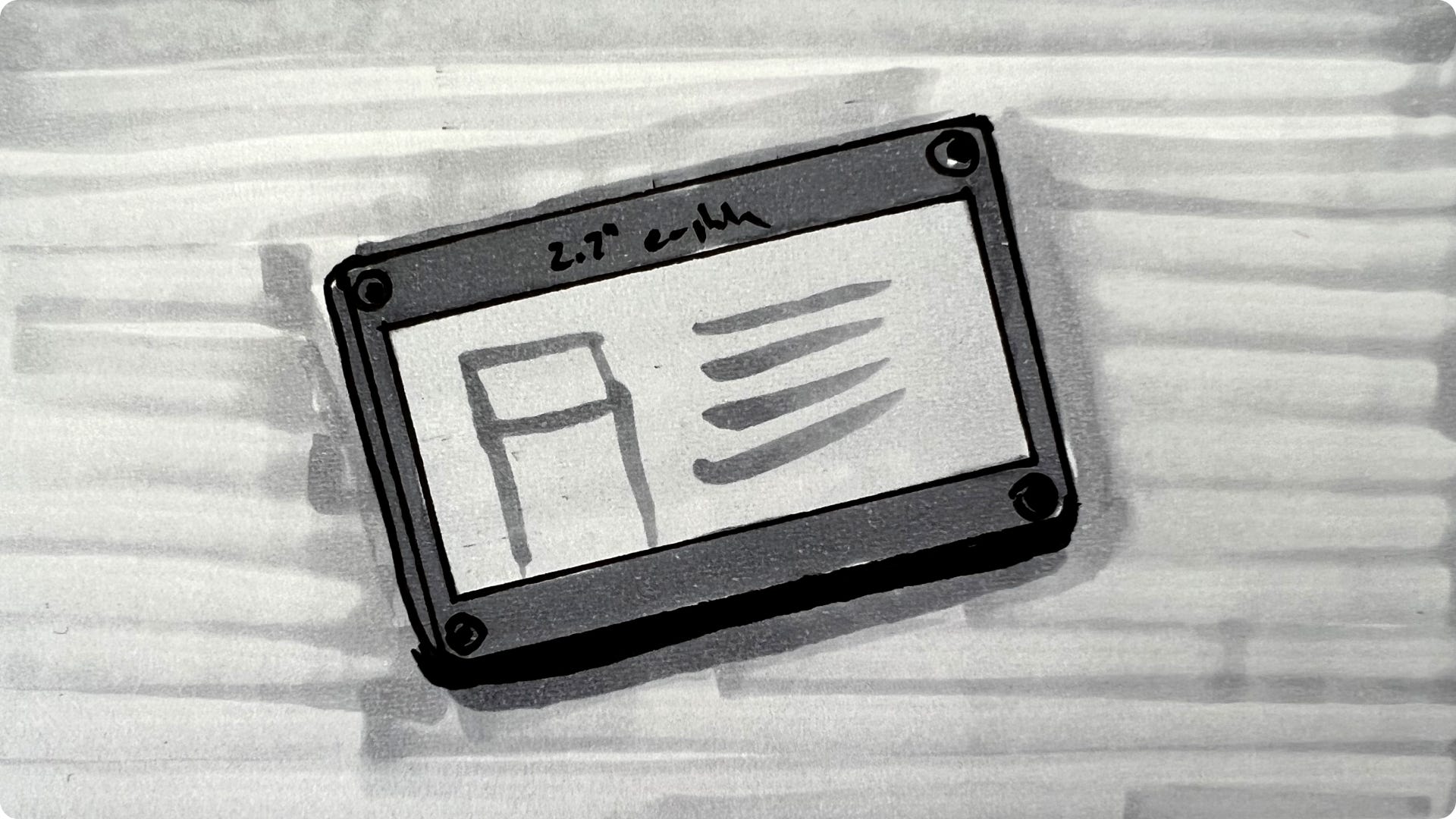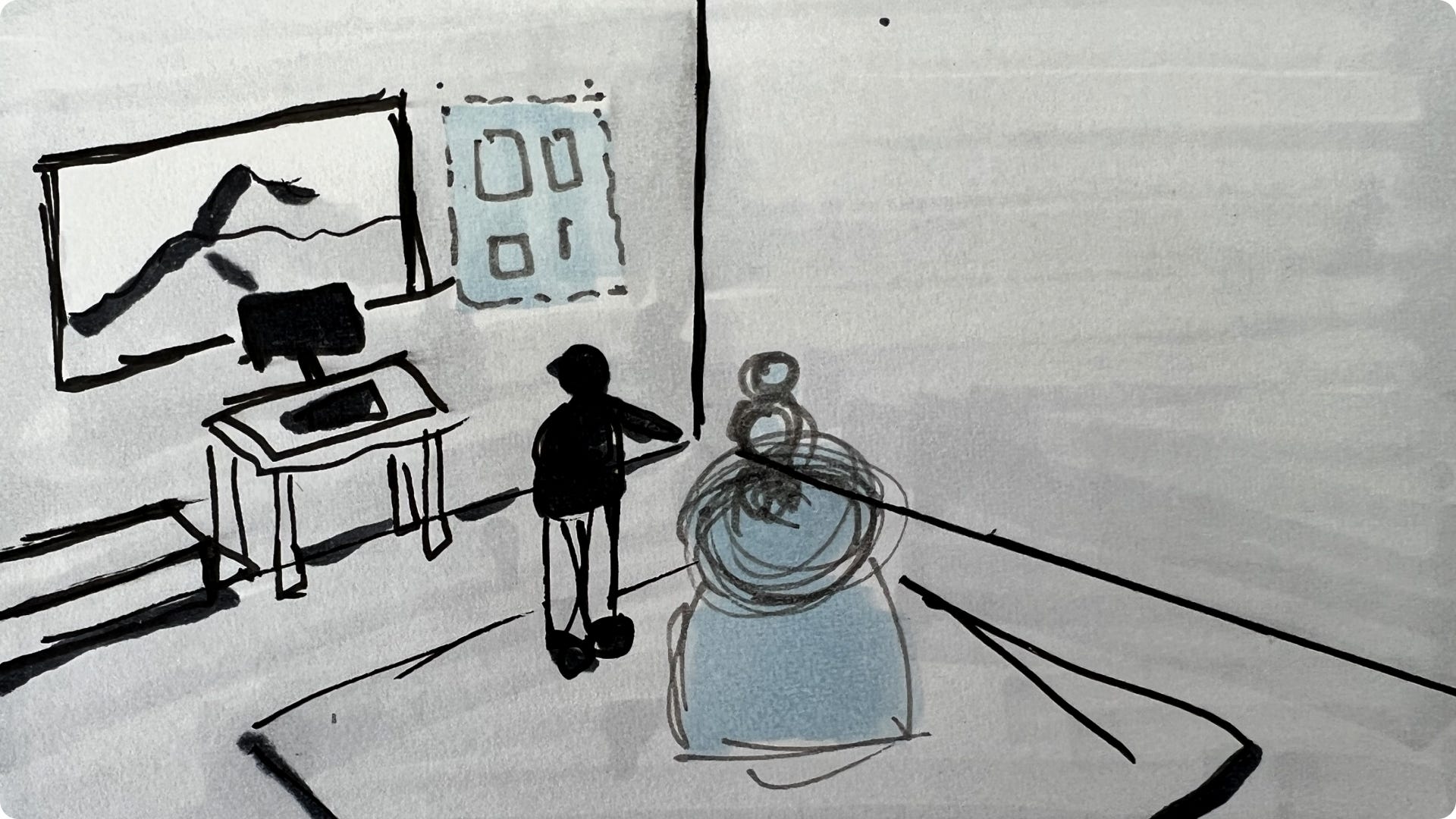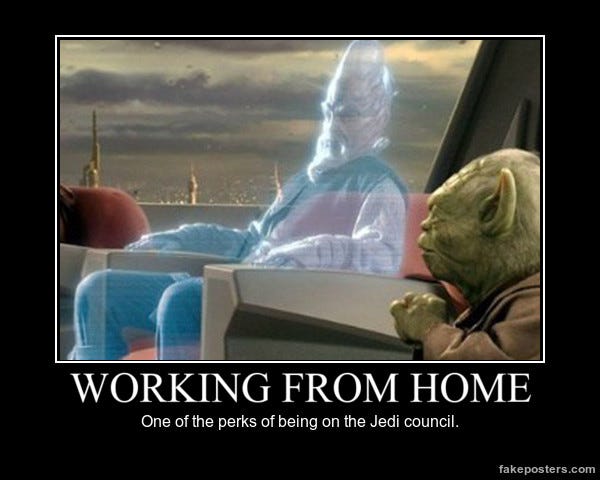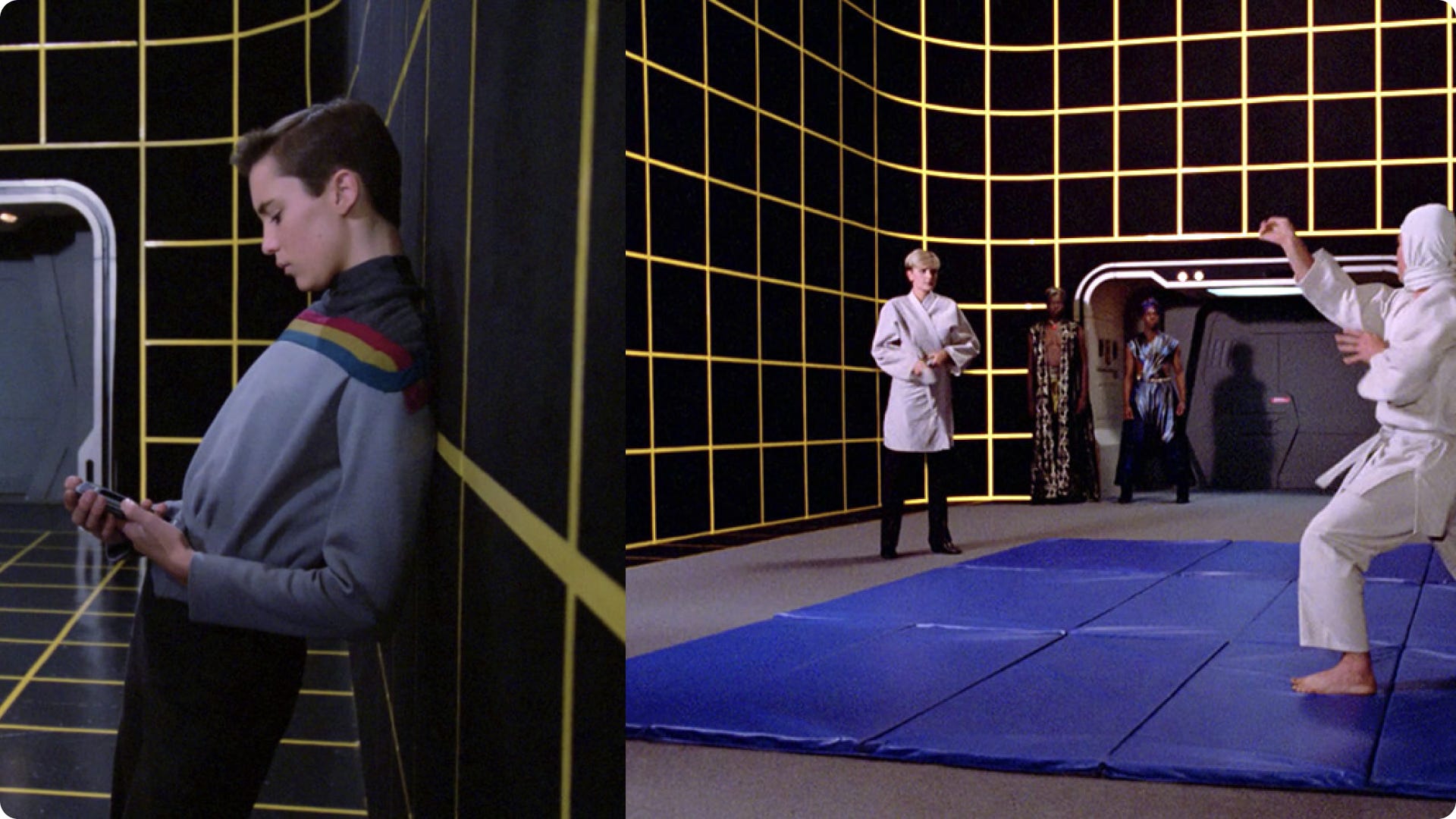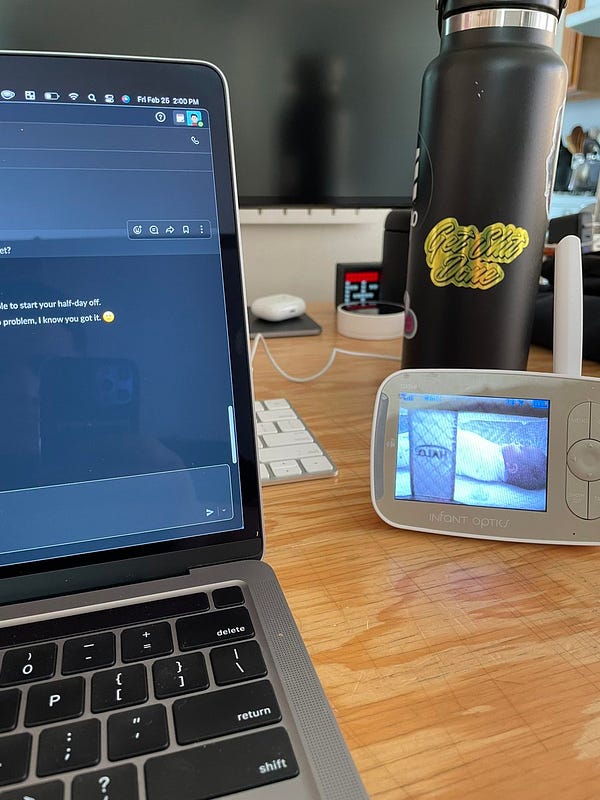Proof of Concept - The future of designing isn't meta
I recently visited our San Francisco work office and it felt familiar, yet so foreign. At one point during my visit, I picked up a physical whiteboard marker and drew a diagram while chatting with a colleague. This feeling almost invoked tears of joy for me. It felt great moving around an office to work. Though I thoroughly enjoyed the in-office experience, I am a proponent of remote-first. I don't like the thought of picking if I am for office, remote, or hybrid. Like any design answer, it depends. That said, I believe in remote work by building out capabilities of offices and studios that people can gather to maximize their time in the office. On October 28, 2021, Facebook CEO Mark Zuckerberg announced the rename of Facebook to Meta, where the company would focus on the future of their company—3D virtual worlds with networks and social connections. The primary hardware in the metaverse is virtual reality headsets. If you've read the book "Ready, Player One" by Ernest Cline, it depicts a future where people work in a virtual reality world through their avatars. If you haven’t, the book isn’t great so you’re not missing much. I'm not a digital prophet. I’ll make a prediction that I’ll walk back based on how the world evolves. I don't believe that Metaverse and virtual reality are going to play a significant role in how we design and build products. Metaverse mental models aren't fully developedVR and the Metaverse are early. It is in the iOS fart and lighter app phase where people were making sense of the underlying technology—often a solution looking for a problem. When Zuck gave a demo of a meeting in the Metaverse, it was filled with video game-like avatars of people talking around a conference room. Let's use the iOS metaphor again. The Metaverse is in the skeuomorphic design phase for iOS, where the patterns were more of a direct representation of what people are familiar with. Buttons looked like leather because they'd clue people in to "touch" the button. This is likely the transition the Metaverse is going through. VR has certainly advanced from tightrope walking apps to more robust experiences. However, I think it's a bit of a leap (A Magic Leap if you will) for where design and computation go. Where I hope future design work goingEventually, we're going to break through the screens in front of our faces and the ones on our faces. The Internet of Things (IoT) promised this future of connective hardware being more integrated into our physical world. The world painted by McKinsey consultants feels what we got was smart refrigerators. However, I do think the world of networked computers that blend more into our physical environment is very much alive. I’ll share a few paradigms I’m keen on. Shared visibility in a digital/physical environmentBeing able to see real-time data of your business and product is key. At an office, you might have dashboards and screens that show important indicators, such as performance and operational health. In a world of computer screens, a lot of this gets buried in different documents and tools across the company, making it difficult to have visibility on what’s going on. In the future, I see these boards being a blend of physical and digital interactions. Digital tools like Figjam and Miro are great, but they still have the risk of being buried. I’d love to see physical boards evolve in a way where it’s tactile, combining both digital data in a way where the surfaces can be moved around like real objects. This could also be paired with digital projects in a physical environment. As augmented reality gets more advanced, there will be ways to project digital layers that are adaptable to the physical environments. I believe this means that AR technology will be smart enough with collision detection to understand how to present digital objects whether you are in an enclosed room or out in the open. Physical objects with digital capabilitiesI think digital tools in the future will “de-screen” a bit more and resemble more physical objects. The Apple Pencil is one of my favorite tools because of its tactile nature of interacting with it more like a pencil than a stylus. My hope is other office supplies will have computational and digital capabilities that allow us to do more with familiar objects. As it evolves, e-ink can close this gap. At the moment, the low latency makes it hard to have a great e-ink experience unless it presents static information. I'd love an experience where e-ink can be the size of index cards (see: flexible e-ink) where a surface area can move the objects around based on how you're collaborating with other people. That kind of sounds like an Ouija board, which sounds creepy. Perhaps there is a way to create an experience that feels less haunting. Conversations with humans via projection and voiceLet’s be clear, for the last few years working from home is not remote work. We retrofitted remote conferencing during a pandemic and called it remote work. Many like myself have been affected by the physical implications of working in front of a screen hour hours in Zoom meetings—resulting in tech neck and other physical pain. The human body wasn’t built to be static for that long. I don’t want to work where we all have setups like Twitch streamers. My hope is hologram technology will improve where humans can use physical space to move around and have conversations. Higher fidelity virtual conversations combined with augmented reality fosters a blended environment of physical and digital that feels more representational of how I want to work. The future of tactile user interfaces and computationI think the GUI is going to go TUI. Instead of only a keyboard and mouse, other tactile controls will enable design: physical buttons, controls, and dials around your workspace to manipulate. I love people finding purpose with El Gato's Stream Deck and Loupedeck as ways to have a more tactile experience. For me, I want to see all the physical dials and buttons come back! Apple patented a Tactile UI that will deliver sensory experiences. One of my favorite things Apple did recently was haptic feedback, simulating sensations on devices. Imagine when things such as smell and temperature can be simulated. That's crossing Holodeck territory. How I’m going to break from the digitalI’m going to experiment with a few things in the present to prototype the future. I’ve identified a few opportunities to make my work more dynamic:
I dream of a future of designing where digital work is augmented and layered into our physical reality with contextual presentations. Keep the future tactile with digital enhancements. I want to build a world where our planet is saved and we don't have to think about post-apocalyptic VR worlds. Never, Player One. Tweet of the weekHype links
Enjoy this newsletter? Please consider sharing it with friends, or subscribing if you haven’t already. I appreciate it! Sincerely, DH |
Older messages
"Should I work at an agency as a designer?"
Sunday, February 20, 2022
Issue 80: Advice (but not advice) about professional services
Hate it 'til it works
Sunday, February 13, 2022
Issue 79: Being the toughest critic on what you're working on
Developing a sketching system
Sunday, February 6, 2022
Issue 78: Creating a shorthand to accelerate ideation
Turn method into magic—the alchemy of prototyping
Sunday, January 30, 2022
Issue 77: How to go from idea to reality
Practicing the dark arts
Sunday, January 23, 2022
Issue 76: Breaking dogma and adapting methods
You Might Also Like
2024 magic moments
Sunday, December 22, 2024
Issue 225: The year from my personal lens ͏ ͏ ͏ ͏ ͏ ͏ ͏ ͏ ͏ ͏ ͏ ͏ ͏ ͏ ͏ ͏ ͏ ͏ ͏ ͏ ͏ ͏ ͏ ͏ ͏ ͏ ͏ ͏ ͏ ͏ ͏ ͏ ͏ ͏ ͏ ͏ ͏ ͏ ͏ ͏ ͏ ͏ ͏ ͏ ͏ ͏ ͏ ͏ ͏ ͏ ͏ ͏ ͏ ͏ ͏ ͏ ͏ ͏ ͏ ͏ ͏ ͏ ͏ ͏ ͏ ͏ ͏ ͏ ͏ ͏ ͏ ͏ ͏ ͏ ͏ ͏ ͏ ͏ ͏ ͏
Planning mode
Friday, December 20, 2024
Lessons from our first-ever annual planning sprint ͏ ͏ ͏ ͏ ͏ ͏ ͏ ͏ ͏ ͏ ͏ ͏ ͏ ͏ ͏ ͏ ͏ ͏ ͏ ͏ ͏ ͏ ͏ ͏ ͏ ͏ ͏ ͏ ͏ ͏ ͏ ͏ ͏ ͏ ͏ ͏ ͏ ͏ ͏ ͏ ͏ ͏ ͏ ͏ ͏ ͏ ͏ ͏ ͏ ͏ ͏ ͏ ͏ ͏ ͏ ͏ ͏ ͏ ͏ ͏ ͏ ͏ ͏ ͏ ͏ ͏ ͏ ͏ ͏ ͏ ͏ ͏ ͏ ͏ ͏
We Co-Sign This AD100-Approved Trend
Thursday, December 19, 2024
View in your browser | Update your preferences ADPro Emboldening the Bath Marble, marble, everywhere, and every drop is chic. According to AD100 designer Jake Arnold, “material drenching”—that is,
177 / Keep calm by listening to these ambient sounds
Thursday, December 19, 2024
Product Disrupt Logo Product Disrupt Half-Monthly Dec 2024 • Part 1 View in browser Welcome to Issue 177 Lately, I've been driving a lot of inspiration from the things I see in real life. The range
The Year in Color: Hella Jongerius, Mocha Mousse, and More
Thursday, December 19, 2024
View in your browser | Update your preferences ADPro Color Our World Since the summer, AD PRO has kept its finger on the pulse of color predictions. Overall, the vibe right now is down to earth,
🐺Get Media Features in 2025
Thursday, December 19, 2024
A BIG Wolf Craft announcement!! ͏ ͏ ͏ ͏ ͏ ͏ ͏ ͏ ͏ ͏ ͏ ͏ ͏ ͏ ͏ ͏ ͏ ͏ ͏ ͏ ͏ ͏ ͏ ͏ ͏ ͏ ͏ ͏ ͏ ͏ ͏ ͏ ͏ ͏ ͏ ͏ ͏ ͏ ͏ ͏ ͏ ͏ ͏ ͏ ͏ ͏ ͏ ͏ ͏ ͏ ͏ ͏ ͏ ͏ ͏ ͏ ͏ ͏ ͏ ͏ ͏ ͏ ͏ ͏ ͏ ͏ ͏ ͏ ͏ ͏ ͏ ͏ ͏ ͏ ͏ ͏ ͏ ͏ ͏ ͏ ͏ ͏ ͏ ͏ ͏
Small teams
Thursday, December 19, 2024
Issue 224: Why the mentality of lean and small always wins ͏ ͏ ͏ ͏ ͏ ͏ ͏ ͏ ͏ ͏ ͏ ͏ ͏ ͏ ͏ ͏ ͏ ͏ ͏ ͏ ͏ ͏ ͏ ͏ ͏ ͏ ͏ ͏ ͏ ͏ ͏ ͏ ͏ ͏ ͏ ͏ ͏ ͏ ͏ ͏ ͏ ͏ ͏ ͏ ͏ ͏ ͏ ͏ ͏ ͏ ͏ ͏ ͏ ͏ ͏ ͏ ͏ ͏ ͏ ͏ ͏ ͏ ͏ ͏ ͏ ͏ ͏ ͏ ͏ ͏ ͏
Accessibility Weekly #427: The Myth of Accessible Components
Thursday, December 19, 2024
December 16, 2024 • Issue #427 View this issue online or browse the full issue archive. Featured: The myth of 'accessible components and done' "Think you've solved all your
Here's what you missed...
Thursday, December 19, 2024
Get press for your business in 2025...here's how. ͏ ͏ ͏ ͏ ͏ ͏ ͏ ͏ ͏ ͏ ͏ ͏ ͏ ͏ ͏ ͏ ͏ ͏ ͏ ͏ ͏ ͏ ͏ ͏ ͏ ͏ ͏ ͏ ͏ ͏ ͏ ͏ ͏ ͏ ͏ ͏ ͏ ͏ ͏ ͏ ͏ ͏ ͏ ͏ ͏ ͏ ͏ ͏ ͏ ͏ ͏ ͏ ͏ ͏ ͏ ͏ ͏ ͏ ͏ ͏ ͏ ͏ ͏ ͏ ͏ ͏ ͏ ͏ ͏ ͏ ͏ ͏ ͏ ͏
Kelly Wearstler on the Rigorous Routine That Keeps Her Churning
Thursday, December 19, 2024
View in your browser | Update your preferences ADPro Kelly Wearstler has expanded her content empire. Earlier this month, the AD100 Hall of Fame designer announced the launch of Wearstlerworld, a
